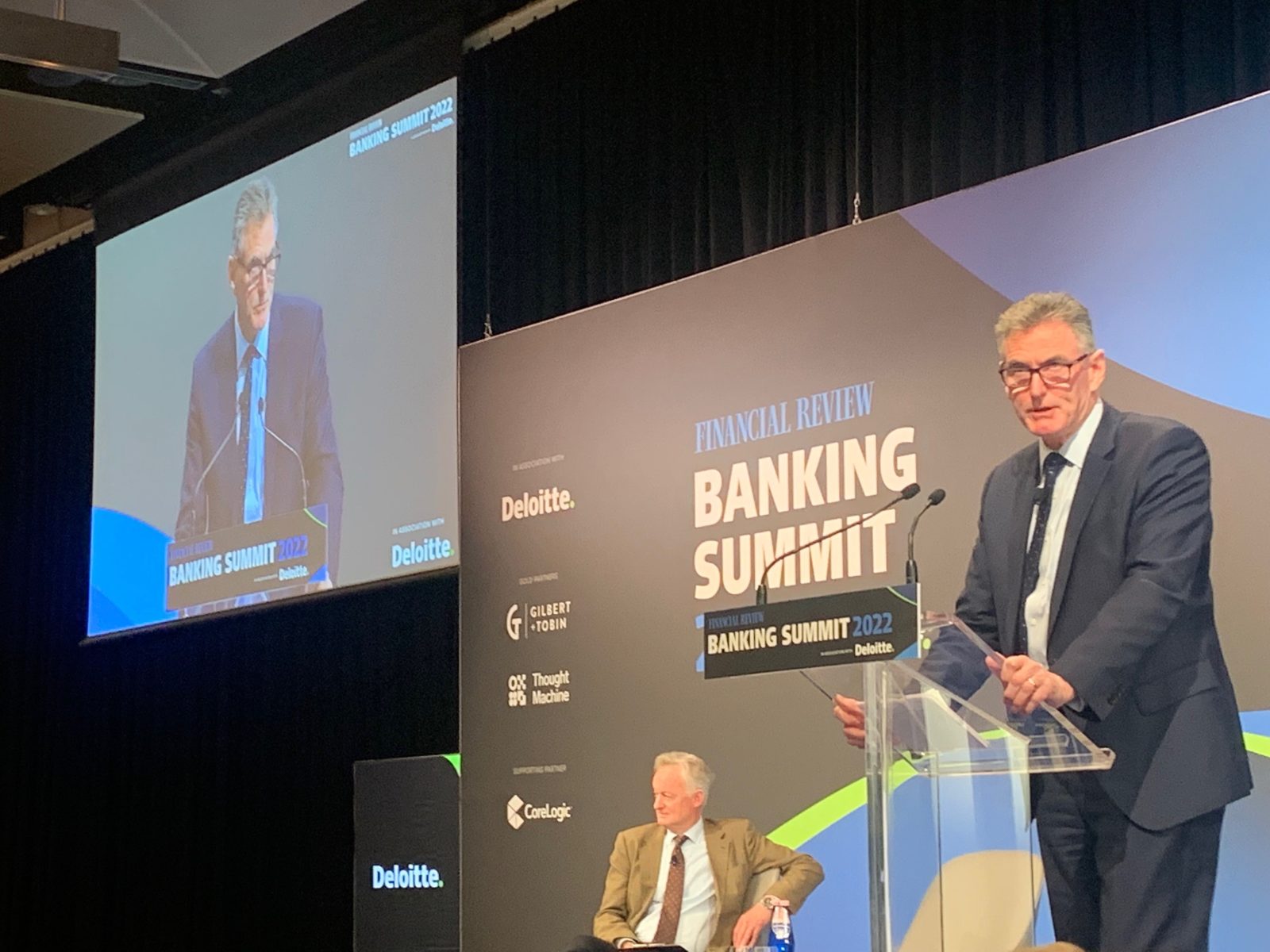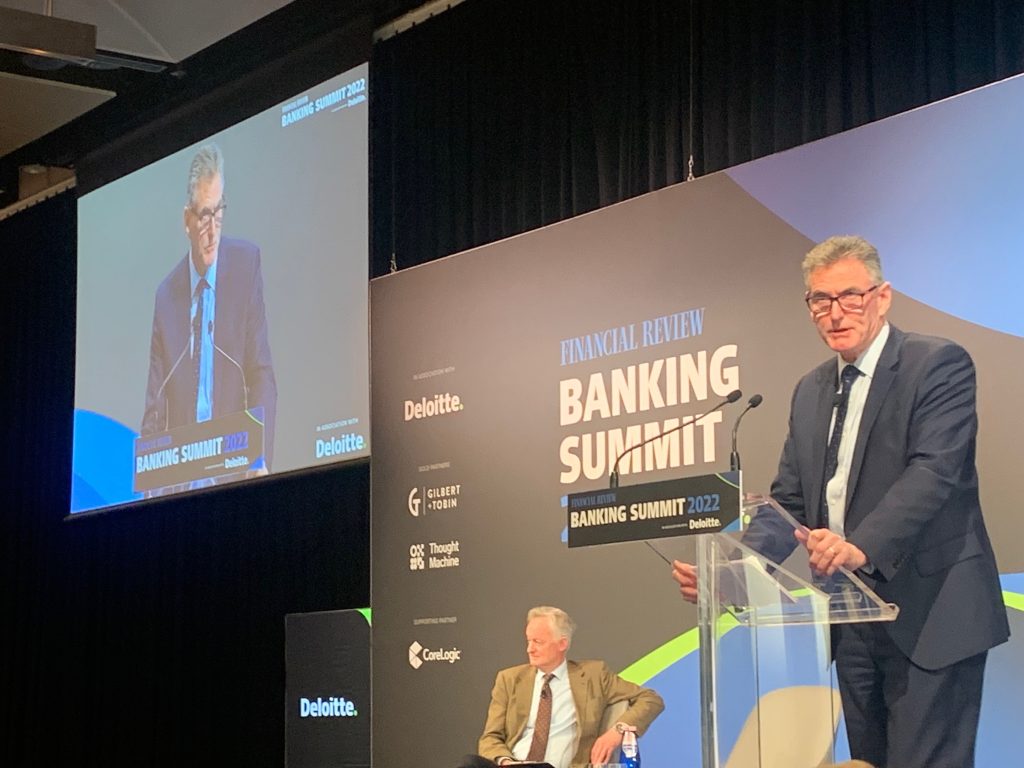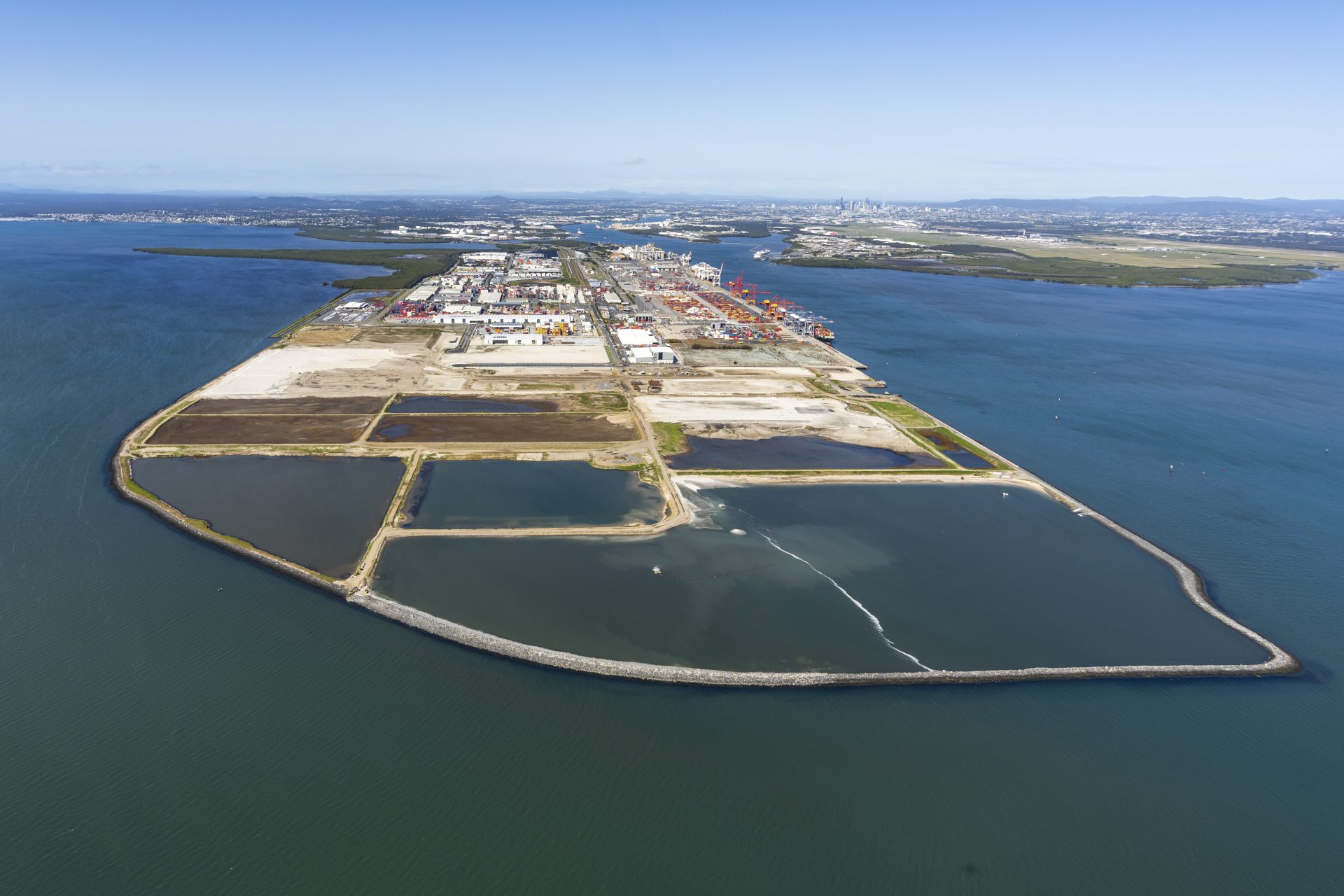TRANSCRIPT – CHECK AGAINST DELIVERY
Speaking at the Australian Financial Review Banking Summit in Sydney on 31 May 2022, NAB CEO Ross McEwan gave the following opening address.
Thank you for having me here today.
I welcome the opportunity to discuss Australia’s future, and NAB’s role in it.
As we look beyond the pandemic and with a newly elected government place, this is a pretty timely discussion that we’re having today.
I’ve said it many, many times and I’ll say it again – this is the best country in the world to live in. Well, maybe second best to New Zealand. But they’re two countries right up there as the best in the world to live, and we should never forget that.
We all want to keep it that way, and to do so we must focus on a few important things that can make a substantial difference. We also need to accept that the government cannot do all the heavy lifting.
Business and communities need to play their part. And we’re prepared to do that.
It’s very clear that at the recent election, Australians provided a mandate for greater action on climate. And as we worked towards net zero by 2050, clarity on climate policy is critical. For us this includes a standard approach to measuring financial emission.
Businesses are already setting transition plans. As a bank, we are working that with our customers, to support their planning and the investment that they need. And we’ve started with the top 100 emitters in the Australian marketplace. For the businesses that think about climate transition, there are enormous business opportunities available.
In the shorter term while the economy has rebounded strongly, there are some economic headwinds. Inflation is at its highest level in decades. There’s upward pressure on wages and labour shortages in nearly every sector.
Supply chain pressures and escalating costs are also biting. More than one in four small businesses say that they cannot get enough stock.
And we’ve entered a phase of interest rates increasing. A lot of borrowers haven’t seen this before, they’ve only experienced interest rates going down for the last 11 years.
Today I wanted to discuss three distinct areas of focus though. First is make it easier to do business in this country. Secondly, is attracting more skilled workers through migration. And finally addressing the housing affordability.
Sustainable economic growth must be underpinned by business investment. And after a long period of subdued investment, business investment is surging.
In March, NAB recorded its highest ever month of business lending. And still our customers are telling us that there are things that can be done to encourage more investment in this country.
The first is to cut red tape and give business owners time back. Time to work on their businesses which will help lift productivity. And I’ll give you a couple of examples.
One in four small business owners work more than 60 hours a week. 12 of these hours are spent navigating government regulation.
On payroll alone, a small business like an independent supermarket – so think of your local IGA – they may be paying staff a total of 126 different rates of pay. And this is extraordinarily complex, and it’s so easy to get wrong. You just need to ask any business like us who are doing a payroll remediation. It’s a complex minefield.
A third of business say they can’t hire people. They can’t retain or train staff quickly enough. So the shortage of skilled and unskilled labour is also something Australia must address.
Net migration turned negative last year with 70,000 more people leaving Australia than arriving. There are 500,000 fewer temporary migrants and half as many international students in the country now compared with 2019.
It’s no wonder that we have 400,000 job vacancies in this country right now – that’s the highest level on record and almost double the pre-pandemic peak.
There are no silver bullets to solve this. Upskilling workers and encouraging people to join or re-join the workforce will help though.
Restoring migration is critical to easing labour and skill shortages as well as contributing to economic growth. In my mind, this is one of the most urgent issues that the new Government should focus on. We acknowledge efforts underway to do exactly that.
Ultimately, we need a lot more people coming into Australia to work and study – and to stay long term.
We do need to consider how a growing population affects Australia’s housing affordability challenge.
Helping more people to buy their own home is core to our business. For most people it is the biggest financial commitment they ever make. Unfortunately, over the past 40 years just getting a deposit together has become harder and harder.
This is particularly the case for those on low incomes and essential workers, who need to live close-by to the hospitals, schools and emergency services that employ them.
The existing government backed home loan deposit guarantee scheme, and the potential new federal shared equities program are very welcome initiatives.
NAB has helped 35,000 first home buyers buy their home in the last 12 months. We’re very happy to help more do that.
We also want to ensure that vulnerable Australians can find appropriate rental and community housing. Having a place to call your own and being part of a stable community is critical to being safe and secure, and it creates opportunity.
There is a chronic lack of social and affordable housing, but there are some innovative solutions available.
NAB has financed now over $2 billion of affordable and specialist housing projects in the last three years. This has helped more than 4,300 homes for about 11,000 people.
One of the businesses NAB is funding and probably the one I am most excited about or been most excited about in any trip I’ve seen to businesses is a business called Nightingale.
It’s an apartment complex in Brunswick, just north of Melbourne CBD, which provides financially, socially, and environmentally sustainable housing and cost.
Twenty per cent of its homes are reserved for community housing. Another twenty per cent is reserved for essential workers, people with disabilities, and Indigenous Australians.
Projects such as these with a waiting list of 17,000 people are worth serious consideration as to how we can scale for the national good.
The broader challenge still needs to have improved accessibility to housing. And some of the areas that need fixing are improved national consistent state planning rules to allow more homes to be built in inner and middle ring suburbs of our larger cities.
Secondly, we need more small in-fill projects with light council planning approval.
And finally, we need more rental accommodation. We want to work together with our customers and with the government to help solve these problems.
NAB exists to support our customers, businesses and homeowners. Our future depends on them thriving.
Thanks for the opportunity to explore these issues and Tony, I’m sure we’ll have lots of conversation about them. Thank you.
-ENDS-





